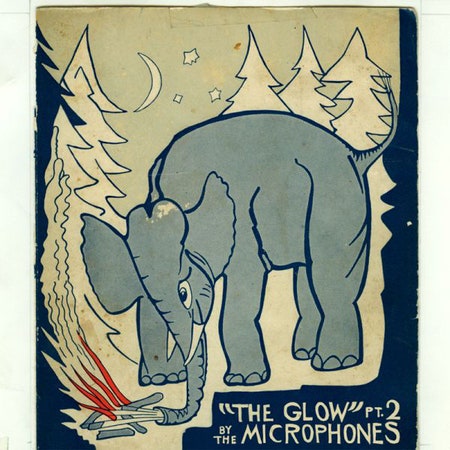It's an amazing thing when pop music expresses beauty through ambiguity. After being pummeled over the head for years and years with I Love Yous and You Are So Beautifuls, the most direct way of expressing images of love and beauty have pretty much lost all impact. Melodic tricks can wear thin just as easily. Hooks are all well and good, but when you've seen a hook enough times, you know not to bite.
Perhaps the problem is that most pop music doesn't put enough faith in the listener. Everything must be laid out in the most obvious of terms, and eventually, that obviousness obscures whatever the music originally intended to convey. If you want to invoke the quiet beauty of the ocean, for example, you can write a pop song that says, "Hey, the ocean is really beautiful," or you can try to come up with a sonic approximation of that beauty.
It's a huge undertaking to attempt to capture something so visual in a song. But for Phil Elvrum, it seems to be second nature. The Glow Pt. 2, the follow-up to last year's gorgeous brainmelt It Was Hot, We Stayed In the Water, captures the sea, the sky, and the mountains in a sonic panorama that seems to live without beginning or end. A sprawling, swirling composition that is both as varied and as consistent as the landscape itself, The Glow Pt. 2 exceeds even its predecessor in capturing the simultaneous wrath and fragility of nature. And sounding really, really cool.
Like It Was Hot's "The Pull" before it, "I Want Wind to Blow" opens with subtle manipulations of acoustic guitars across stereo channels. There's an amazing sense of open space to the track as overtones from a low, rhythmic rumble, and from the stereo acoustic guitars, create a wash of barely audible noise floating through the mid-frequencies. "I Want Wind to Blow," like a good portion of The Glow Pt. 2, uses repetition and understatement to transform itself from a simple song into a landscape.
And as with any landscape, the way the songs on The Glow Pt. 2 are perceived greatly affects the impact of the record. This album simply must be listened to on headphones. Hearing the record on regular speakers is like staring at the Grand Canyon through a Viewmaster. The illusion of depth is weak at best, and easily broken. With headphones, the sounds contained within the record absolutely come to life, bouncing and slithering from ear to ear. The use of stereo panning is as integral a part of the disc as the melodies and instrumentation.
